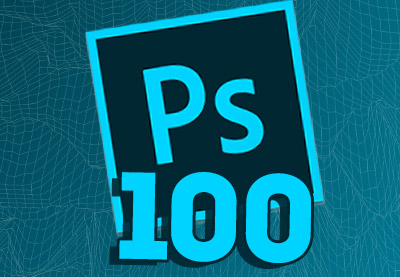
When working with vector images, you’ll often find that you need to use the EPS file format. The EPS file format is used to save vector-based images. The great thing about using an EPS document is that it's compatible with many different programs and operating systems, including free software. You may also run into situations where a client needs this as a specific format for things such as billboards.
In this quick tip, we’ll go over how to save EPS files in Illustrator and Photoshop.
What You'll Learn in This EPS Exporting Tutorial
- How to export EPS from Illustrator
- How to export EPS from Photoshop
Follow along with us over on our Envato Tuts+ YouTube channel:
What You’ll Need
You will need a project file to work from and export. I suggest using a project that makes use of vector shapes to best take advantage of the file format. Projects such as logos are a perfect fit!
For Illustrator, we’ll be using a vintage logo from the Vintage Text Effects for Illustrator graphics pack from Envato Elements.
For Photoshop, we’ll be using another vintage-inspired logo from the Editable Travel Labels and Logo Designs graphic pack from Envato Elements.
1. How to Export EPS From Illustrator
Step 1
Start off by creating a new document in Illustrator, or open up an existing Illustrator document you want to export as an EPS file.
In our case, we’re using a vector logo we got from Envato Elements.

Step 2
To export as an EPS file, go to File > Save As.

Step 3
Now that you have opened up the Save As dialog box, you may notice that the default save type is .ai. This is a general project file type for Illustrator, but other vector programs may have difficulty opening it.
To change the file type, select EPS from the Format dropdown. Then select Save.

Step 4
Next, you’ll be presented with a whole host of options from the EPS Options dialog window. There are a lot of options here, but typically the default options should work for most cases.
Once you've reviewed the settings, go ahead and press OK.
You should now have an EPS version of your project saved. Now you know how to export EPS from Illustrator!

2. How to Export EPS From Photoshop
Step 1
Start off by creating a new document in Photoshop, or open up an existing Photoshop document you want to export as an EPS file.
In our case, we’re using this Photoshop logo template we got from Envato Elements.

Step 2
To export an EPS file in Photoshop, go to File > Save As.

Step 3
Now that you have the Save As dialog window open, use the Format dropdown and select Photoshop EPS.

Step 4
Notice that you are given a warning that this file format has to be saved as a copy. Photoshop automatically makes that selection for us.
Once you are ready, select Save to create an EPS file for our Photoshop logo template.

Step 5
You will now be presented with some options from the EPS Options dialog window. Make sure that the Include Vector Data checkbox is tagged to ensure that any vector objects are saved correctly.
Once you're happy with your settings, select OK.
You should now have an EPS copy of your Photoshop logo template project. Now you know how to export EPS from Photoshop!

What Are EPS Files and What Are They For?
Now that we’ve created an EPS file, you may be curious about how they are used in a practical setting.
EPS files are typically used for printing large signs and banners. It would not be uncommon for a print shop to request an EPS version of your project files, for example.
The main benefit of EPS documents for vector art is that they retain the image quality, regardless of how large you make them. For example, a JPG has a set resolution, so would lose quality at large sizes. This is why project types such as logos and banners are best to keep in the vector format. The EPS file format provides us with a way of sharing these vector files with a wide variety of programs related to design and, most importantly, print.
Another interesting aspect of EPS is that even though it has become prominently used for vector art, it actually has its origins as a print file. In fact, EPS stands for “Encapsulated PostScript”. This means it contains a lot of technical data other common image types don’t contain. Interesting, right?
Things to Note
Despite their uses, there are some things to watch out for when using EPS files. EPS files tend to be larger in file size than Illustrator (AI) and Photoshop (PSD) files. For these reasons, I would suggest keeping your projects in the default file types and exporting EPS files when they are needed. They are useful but, in most cases, not a good replacement for your core project files.
Conclusion
As you can see, exporting your project as an EPS file in both Illustrator and Photoshop is a fairly straightforward process. Whether a print shop or client has requested it, or you were just curious, now you know how to achieve this.
Found this quick tip useful? Check out these other Photoshop and Illustrator tutorials!
-

How to Create an Art Nouveau Text Effect in Illustrator
-

100 Free Photoshop Actions (And How to Make Your Own)
-

Best Software for Icon Design: Photoshop vs. Illustrator
-

How to Make Your Own Logo Design (Do It Yourself Guide)
-

How to Make a Watercolor Brush in Adobe Illustrator
No comments:
Post a Comment